-
 Bitcoin
Bitcoin $106,437.2012
0.82% -
 Ethereum
Ethereum $2,442.5287
0.82% -
 Tether USDt
Tether USDt $1.0005
-0.02% -
 XRP
XRP $2.1812
-0.27% -
 BNB
BNB $645.1327
0.45% -
 Solana
Solana $146.2379
0.39% -
 USDC
USDC $0.9999
-0.01% -
 TRON
TRON $0.2751
0.92% -
 Dogecoin
Dogecoin $0.1662
-0.23% -
 Cardano
Cardano $0.5827
-1.22% -
 Hyperliquid
Hyperliquid $37.5225
0.04% -
 Bitcoin Cash
Bitcoin Cash $479.0877
4.02% -
 Sui
Sui $2.7846
-3.27% -
 Chainlink
Chainlink $13.3576
0.84% -
 UNUS SED LEO
UNUS SED LEO $9.0252
-1.20% -
 Stellar
Stellar $0.2455
-1.07% -
 Avalanche
Avalanche $18.0680
-1.81% -
 Toncoin
Toncoin $2.8948
-1.07% -
 Shiba Inu
Shiba Inu $0.0...01164
-1.65% -
 Litecoin
Litecoin $85.0637
-0.06% -
 Hedera
Hedera $0.1526
-0.89% -
 Monero
Monero $316.2941
0.78% -
 Ethena USDe
Ethena USDe $1.0003
-0.04% -
 Polkadot
Polkadot $3.4113
-1.87% -
 Dai
Dai $1.0000
-0.01% -
 Bitget Token
Bitget Token $4.4488
5.16% -
 Uniswap
Uniswap $7.1740
3.09% -
 Pi
Pi $0.5968
11.43% -
 Pepe
Pepe $0.0...01010
-0.65% -
 Aave
Aave $264.3189
0.40%
How to judge the double divergence between the MFI indicator and the price?
The Money Flow Index (MFI) helps traders spot overbought or oversold conditions, and when combined with double divergence patterns, it can signal strong potential reversals in price trends.
Jun 25, 2025 at 10:00 am
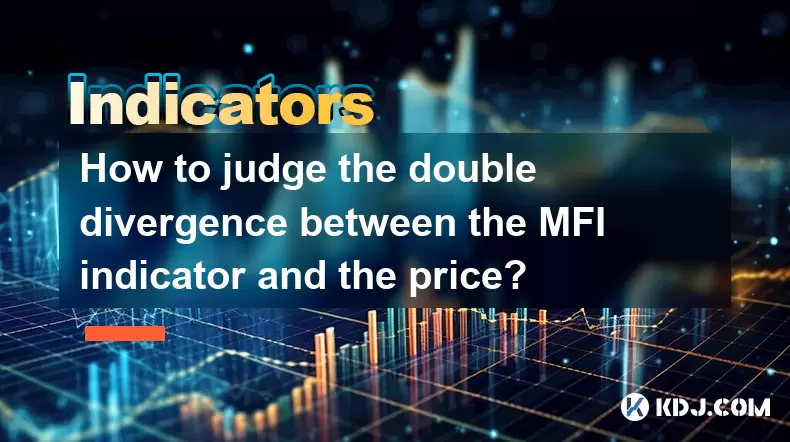
Understanding the Basics of the MFI Indicator
The Money Flow Index (MFI) is a momentum oscillator used in technical analysis to measure the flow of money into or out of an asset. It combines price and volume data to identify overbought or oversold conditions. The MFI ranges from 0 to 100, with values above 80 typically indicating overbought conditions and below 20 signaling oversold levels.
To begin understanding double divergence, it's essential to first grasp how the MFI indicator works in isolation. When the price makes new highs but the MFI fails to confirm this movement by forming lower highs, it suggests weakening momentum — a classic bearish divergence. Conversely, when the price hits new lows while the MFI forms higher lows, this indicates strengthening buying pressure — a bullish divergence.
What Is Divergence in Technical Analysis?
Divergence occurs when the price action of an asset moves in the opposite direction of a technical indicator like the MFI. This discrepancy often signals a potential reversal in the current trend.
There are two main types of divergence: regular divergence and hidden divergence. Regular divergence usually signals trend reversals, while hidden divergence hints at trend continuation. In the context of double divergence, we focus on identifying two consecutive instances where price and MFI fail to align — hence the term "double."
This phenomenon can be either bullish or bearish depending on the direction of the price and MFI movements. Identifying these patterns early can offer traders valuable insights into market sentiment and potential turning points.
Identifying Double Divergence Between Price and MFI
Double divergence requires careful observation of both price swings and corresponding MFI peaks or troughs. To spot bullish double divergence, look for two consecutive lows in price that are lower than the previous ones, while the MFI forms two higher lows.
For example:
- The price drops to point A, then rebounds slightly to point B, and then falls again to point C, which is lower than A.
- Meanwhile, the MFI touches a low at A, rises to B, and then forms another low at C that is higher than A.
In the case of bearish double divergence, the price makes two consecutive higher highs, but the MFI forms two lower highs. This pattern often precedes a downward reversal.
It’s crucial to ensure that the swing points align properly and that the time frames between the two divergences aren't too far apart. Otherwise, the signal may lose its significance.
Confirming Double Divergence with Other Indicators
While double divergence can be a powerful signal, relying solely on the MFI and price relationship increases the risk of false signals. Therefore, confirming the pattern with other indicators enhances reliability.
One common method is using moving averages such as the 50-period and 200-period Simple Moving Averages (SMA) to determine the prevailing trend. If a bullish double divergence appears during a downtrend, and the price is above the 50 SMA, it strengthens the likelihood of a reversal.
Another effective tool is the Relative Strength Index (RSI). If RSI also shows a similar divergence pattern, it reinforces the validity of the double divergence signal. Additionally, volume analysis can provide confirmation — increasing volume during the second divergence leg often supports the strength of the potential reversal.
Candlestick patterns such as engulfing candles or pin bars near key support/resistance levels can further validate the presence of double divergence.
Practical Steps to Trade Using Double Divergence
Once you’ve identified a confirmed double divergence pattern, the next step is to plan your trade entry, stop loss, and take profit levels.
Here’s a practical approach:
- Entry: Wait for the price to break above the most recent swing high (for bullish) or below the most recent swing low (for bearish). Alternatively, enter after a candle closes beyond the neckline formed by the two divergence points.
- Stop Loss: Place your stop just beyond the last significant swing point that confirms the divergence. For bullish setups, place it below the lowest low of the two lows; for bearish setups, place it above the highest high.
- Take Profit: Use a risk-reward ratio of at least 1:2. Measure the distance from your entry to the stop loss and multiply by two to set your target.
Always use limit orders instead of market orders to avoid slippage. Also, consider using trailing stops once the price moves favorably to lock in profits.
Common Mistakes to Avoid When Analyzing Double Divergence
Many traders misinterpret or overlook key aspects of double divergence due to improper setup or rushed analysis.
Some common mistakes include:
- Ignoring the alignment of swing highs and lows between price and MFI.
- Using different time frames for analyzing price and MFI, leading to mismatched signals.
- Entering trades before confirmation, which increases the chance of false breakouts.
- Failing to combine divergence signals with other tools for confluence.
Avoiding these pitfalls ensures more accurate identification and execution of double divergence strategies.
Frequently Asked Questions
Q: Can double divergence occur on any time frame?
Yes, double divergence can appear across all time frames. However, higher time frames like the daily or weekly charts tend to produce more reliable signals compared to shorter intervals like the 5-minute or 15-minute charts.
Q: How does double divergence differ from regular divergence?
Regular divergence involves a single instance where price and momentum move in opposite directions. Double divergence consists of two consecutive divergence setups, offering stronger evidence of a potential trend reversal.
Q: Is double divergence applicable to all cryptocurrencies?
Yes, double divergence applies to any cryptocurrency chart where the MFI indicator can be applied. However, it tends to be more effective in assets with sufficient trading volume and volatility.
Q: Should I always wait for confirmation before entering a trade based on double divergence?
Yes, waiting for confirmation through price action or additional indicators significantly improves the accuracy of the trade setup and reduces exposure to false signals.
Disclaimer:info@kdj.com
The information provided is not trading advice. kdj.com does not assume any responsibility for any investments made based on the information provided in this article. Cryptocurrencies are highly volatile and it is highly recommended that you invest with caution after thorough research!
If you believe that the content used on this website infringes your copyright, please contact us immediately (info@kdj.com) and we will delete it promptly.
- Shiba Inu, Dogecoin, and Meme Coins: What's the Hype in 2025?
- 2025-06-25 16:25:12
- JasmyCoin's Wild Ride: 6x Setup or Just a Mirage?
- 2025-06-25 16:25:12
- DEX Race Heats Up: Paradigm's Bet on GTE and the Startup Investment Landscape
- 2025-06-25 14:55:12
- Pepe Coin's Wild Ride: Liquidation Zones, Trump's Crypto Crash, and the Allure of APY
- 2025-06-25 14:55:12
- Passive Income, Cryptos, and ROI: Troller Cat Leads the Meme Coin Revolution in 2025
- 2025-06-25 15:00:12
- Cryptos, Buy Now, Beta Version: Riding the Meme Coin Wave with Troller Cat and Beyond
- 2025-06-25 15:00:12
Related knowledge
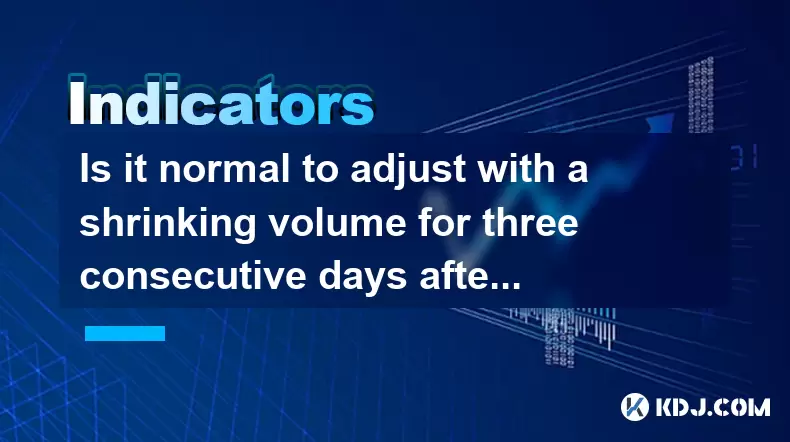
Is it normal to adjust with a shrinking volume for three consecutive days after breaking through the previous high with a large volume?
Jun 25,2025 at 03:49pm
Understanding Volume and Price Relationship in Cryptocurrency TradingIn cryptocurrency markets, volume is a critical metric that reflects the number of assets traded over a specific period. When a cryptocurrency breaks through a previous high with large volume, it typically signals strong buying pressure and market confidence. However, it's not uncommon...
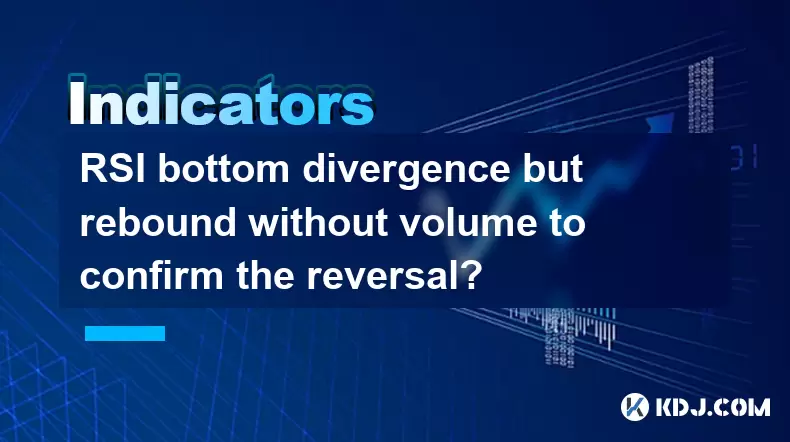
RSI bottom divergence but rebound without volume to confirm the reversal?
Jun 25,2025 at 04:42pm
Understanding RSI Bottom DivergenceRelative Strength Index (RSI) is a momentum oscillator used in technical analysis to measure the speed and change of price movements. RSI bottom divergence occurs when the price of an asset makes a new low, but the RSI does not confirm that low and instead forms a higher low. This pattern suggests weakening downward mo...
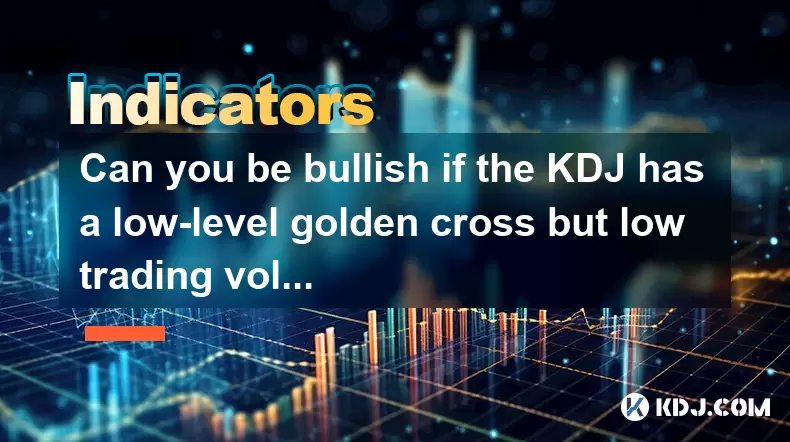
Can you be bullish if the KDJ has a low-level golden cross but low trading volume?
Jun 25,2025 at 03:14pm
Understanding the KDJ Indicator in Cryptocurrency TradingThe KDJ indicator, also known as the stochastic oscillator, is a momentum-based technical analysis tool widely used in cryptocurrency trading. It comprises three lines: the %K line (fast stochastic), the %D line (slow stochastic), and the J line (divergence value). These lines oscillate between 0 ...
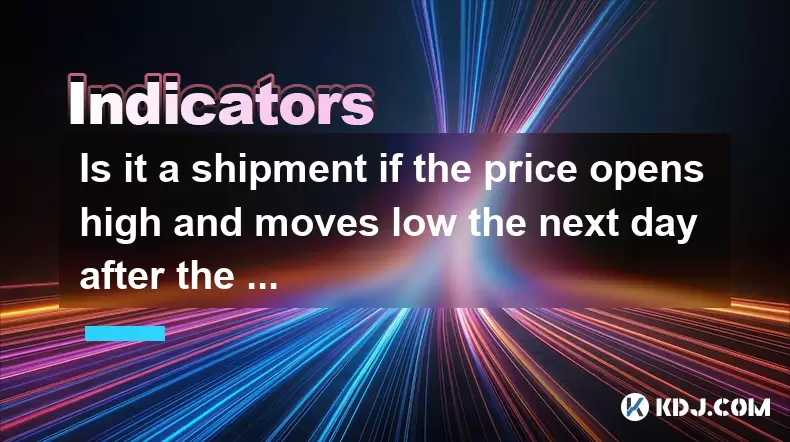
Is it a shipment if the price opens high and moves low the next day after the daily limit with huge volume?
Jun 25,2025 at 12:56pm
Understanding the Concept of a Shipment in Cryptocurrency TradingIn cryptocurrency trading, the term shipment refers to a scenario where large volumes of an asset are sold off rapidly, often leading to a significant price drop. This is typically associated with whale activity or coordinated selling by major holders. When traders observe certain patterns...
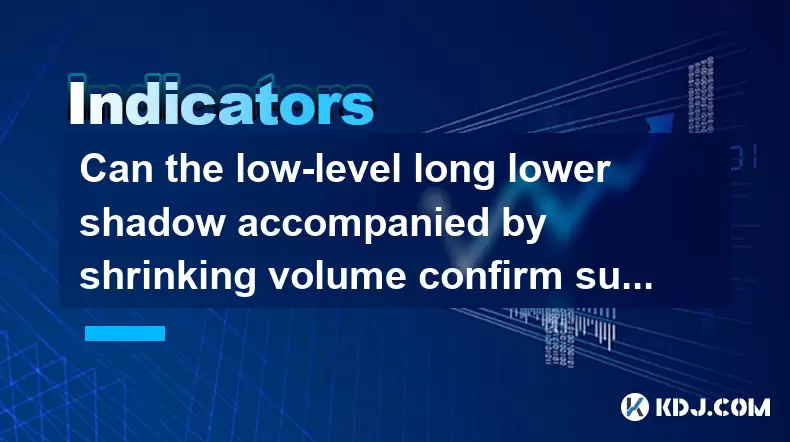
Can the low-level long lower shadow accompanied by shrinking volume confirm support?
Jun 25,2025 at 03:08pm
Understanding the Long Lower Shadow Candlestick PatternA long lower shadow candlestick pattern occurs when a candle closes near its high but has a significantly long lower wick, indicating that sellers pushed prices down during the session but were met with strong buying pressure that drove the price back up. This pattern is often seen as a potential si...
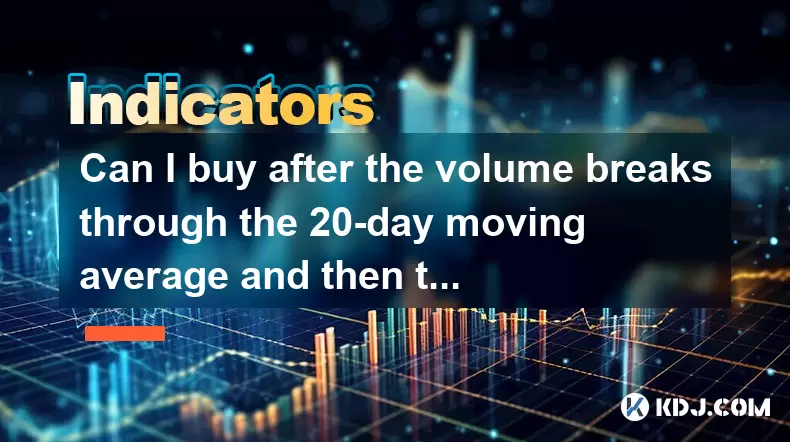
Can I buy after the volume breaks through the 20-day moving average and then the volume shrinks and then the callback is pulled back?
Jun 25,2025 at 12:00pm
Understanding Volume and Moving Averages in Cryptocurrency TradingIn the world of cryptocurrency trading, volume and moving averages are two critical indicators that traders rely on to make informed decisions. The 20-day moving average (MA) is a popular tool used to identify trends and potential entry or exit points. When volume breaks through this aver...

Is it normal to adjust with a shrinking volume for three consecutive days after breaking through the previous high with a large volume?
Jun 25,2025 at 03:49pm
Understanding Volume and Price Relationship in Cryptocurrency TradingIn cryptocurrency markets, volume is a critical metric that reflects the number of assets traded over a specific period. When a cryptocurrency breaks through a previous high with large volume, it typically signals strong buying pressure and market confidence. However, it's not uncommon...

RSI bottom divergence but rebound without volume to confirm the reversal?
Jun 25,2025 at 04:42pm
Understanding RSI Bottom DivergenceRelative Strength Index (RSI) is a momentum oscillator used in technical analysis to measure the speed and change of price movements. RSI bottom divergence occurs when the price of an asset makes a new low, but the RSI does not confirm that low and instead forms a higher low. This pattern suggests weakening downward mo...

Can you be bullish if the KDJ has a low-level golden cross but low trading volume?
Jun 25,2025 at 03:14pm
Understanding the KDJ Indicator in Cryptocurrency TradingThe KDJ indicator, also known as the stochastic oscillator, is a momentum-based technical analysis tool widely used in cryptocurrency trading. It comprises three lines: the %K line (fast stochastic), the %D line (slow stochastic), and the J line (divergence value). These lines oscillate between 0 ...

Is it a shipment if the price opens high and moves low the next day after the daily limit with huge volume?
Jun 25,2025 at 12:56pm
Understanding the Concept of a Shipment in Cryptocurrency TradingIn cryptocurrency trading, the term shipment refers to a scenario where large volumes of an asset are sold off rapidly, often leading to a significant price drop. This is typically associated with whale activity or coordinated selling by major holders. When traders observe certain patterns...

Can the low-level long lower shadow accompanied by shrinking volume confirm support?
Jun 25,2025 at 03:08pm
Understanding the Long Lower Shadow Candlestick PatternA long lower shadow candlestick pattern occurs when a candle closes near its high but has a significantly long lower wick, indicating that sellers pushed prices down during the session but were met with strong buying pressure that drove the price back up. This pattern is often seen as a potential si...

Can I buy after the volume breaks through the 20-day moving average and then the volume shrinks and then the callback is pulled back?
Jun 25,2025 at 12:00pm
Understanding Volume and Moving Averages in Cryptocurrency TradingIn the world of cryptocurrency trading, volume and moving averages are two critical indicators that traders rely on to make informed decisions. The 20-day moving average (MA) is a popular tool used to identify trends and potential entry or exit points. When volume breaks through this aver...
See all articles























































































